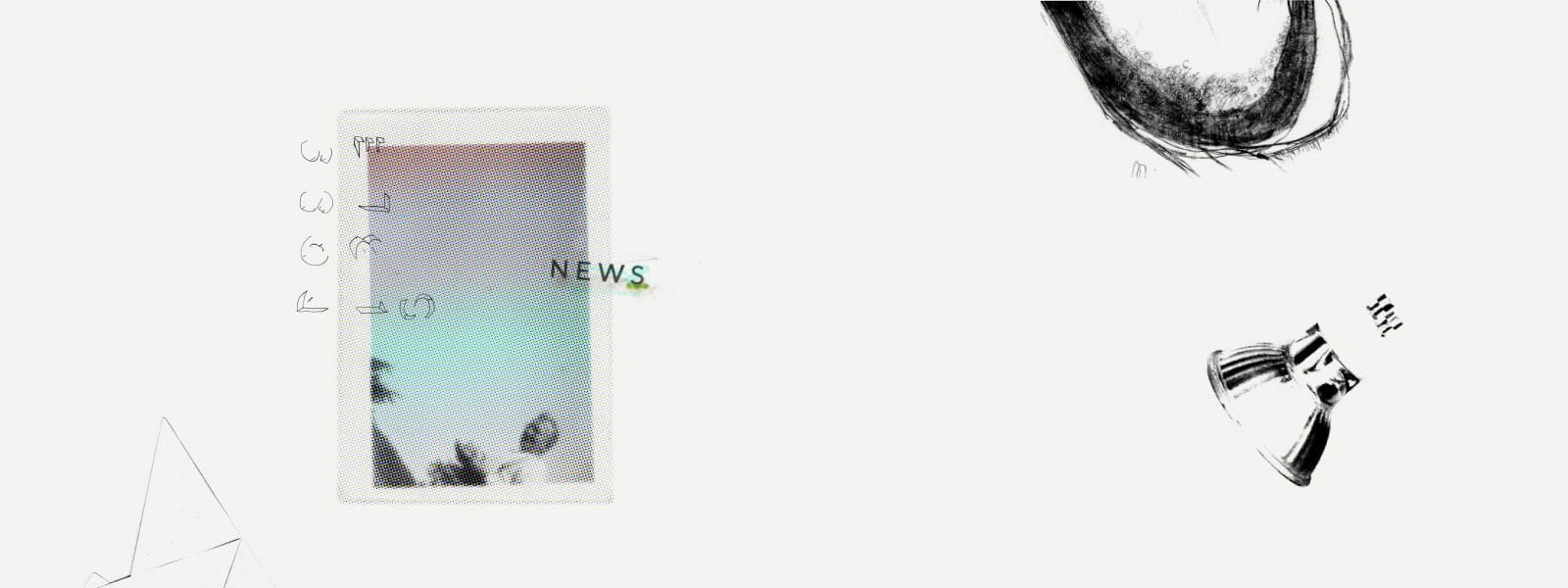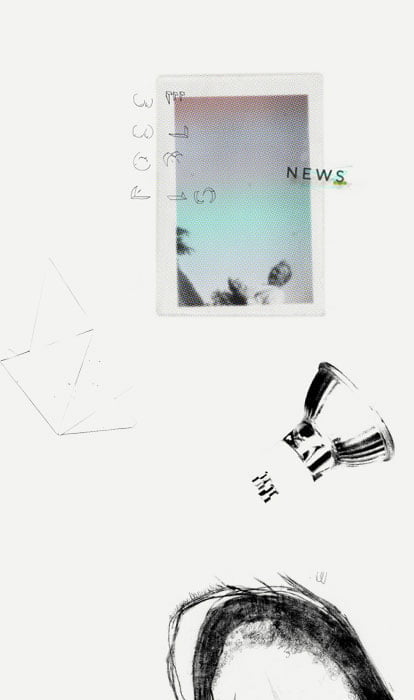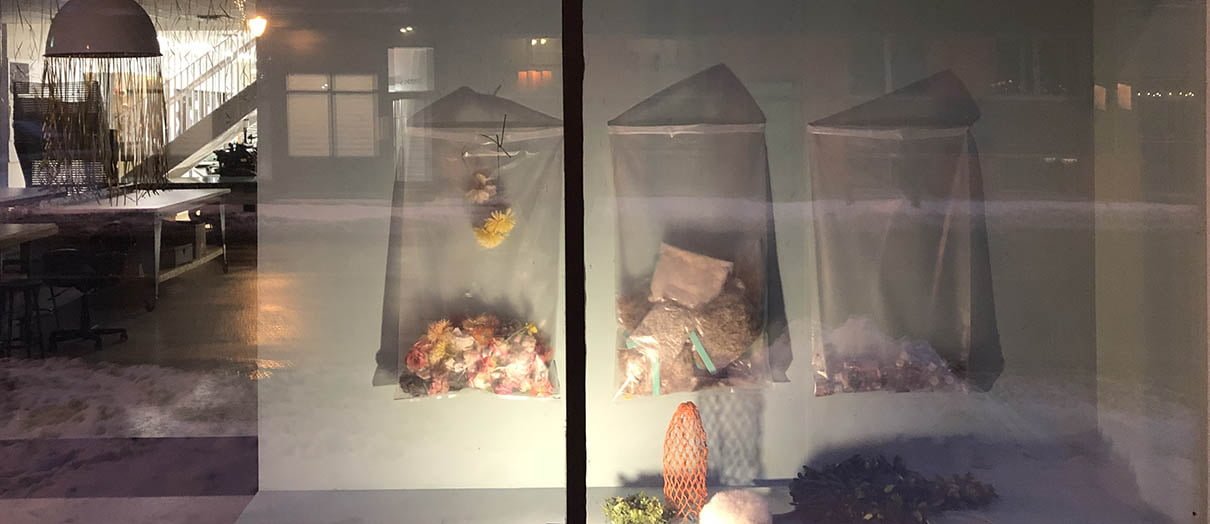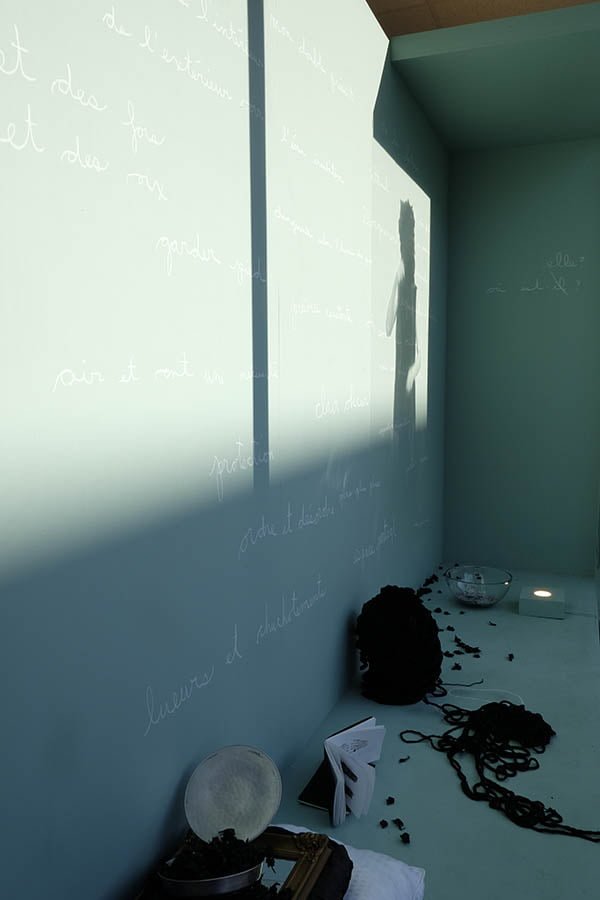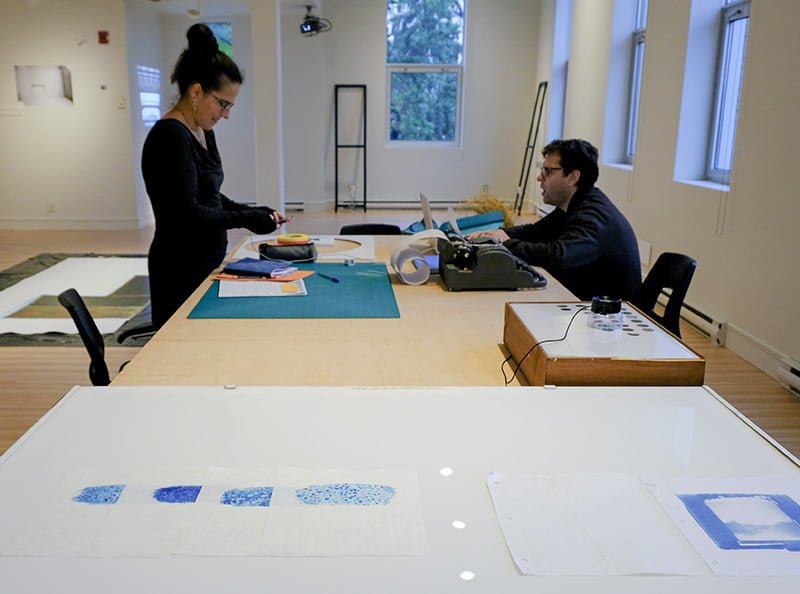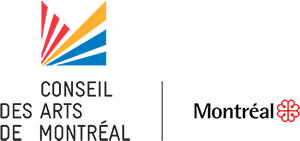L’Écrin – A look back at a year’s work with guest artist-curators
The staff at L’imprimerie interviewed Caroline Boileau et Stéphane Gilot, the artist-curators for L’Écrin. With this unique project going on its second year, they sat down with us to share their experience.
How would you define L’Écrin?
L’Écrin is much more than L’imprimerie’s storefront window, it is a place for exploration, a place where people get to see what goes on in the artist’s studio. What we are interested in is developing a free creation space for artists. We encourage them to experiment with things they have never tried before.
Where did the idea for this project come from?
We got the idea when talking with members of L’imprimerie’s programming committee. Back then, there was a desire to make the storefront more lively. So we proposed a curatorial project. L’Écrin is at once a sculpture and a framing device. Of course, this space was originally meant as a storefront, but its small size poses a unique challenge; how the artists deal with this constraint is an integral part of the project.
What do you ask of artists?
We ask that artists use this space to experiment, rather than to display finished works. Some of these experiments may fail… But the simple act of trying something out moves the work forward.
To initiate dialogue, we have given each artist some reading material, a gift that acts as a transmission device. The book might be an essay or a work of fiction that helps to get the process started. We always picked books that reminded us of the artist.
The curators’ reading list:
The Body Artist : a novel by Don De Lillo: suggested to Nicole Panneton
The Empty Space by Peter Brook: suggested to Andrée-Anne Dupuis Bourret
Le musée du silence, a novel by Yoko Ogawa: suggested to Judith Bellavance
In the Country of Last Things, a novel by Paul Auster: suggested to Julie-Isabelle Laurin
The artists’ relationship to the public space and onlookers
When you are working in a storefront window, you are both visible and invisible. Something about your actions registers, but it is impossible to measure to what extent. How can we know for sure that anything, an impression, even a fleeting one, remains in the minds of passersby if they do not stop and come in to start a conversation?
Going forward… How L’Écrin helped artists
L’Écrin acted as a primer for many artists. For example, Nicole Panneton just finished a video composed of footage shot inside L’Écrin. She transformed her experience into a performative and videographical action. This project will be distributed by Groupe Intervention Vidéo (GIV).
Andrée-Anne Dupuis Bourret used L’Écrin as an exercise book. Alone, in tandem with visitors, or under the camera’s watchful eye, she explored different actions and orchestrated little scenes using various images and objects.
For Judith Bellavance, L’Écrin was a dry run for a later installation. She usually does this type of work in the studio for photography, but in L’Écrin, these tests became autonomous installations.
In Julie-Isabelle Laurin’s case, she created a marionette named Clothilde. L’Écrin became a puppet booth.
The artists of Le Chantier – research project on the printed and photographic image had the added challenge of having to share this space. They took turns working, adding elements one at a time and insinuating themselves in each other’s work.
What next? …
We are currently planning L’Écrin’s second year. Our call for submissions is live, and we are very anxious to see the new projects.
Until then, we are starting the new programming cycle with a proposal by Ileana Hernandez, presented in collaboration with the Montreal Printed Art Festival. Ileana will be combining print and performance art to question the relationship between L’Écrin and the public space.
Images
Banner : Judith Bellavance, Les alliances, 2018-2019
Nicole Panneton, Taire ce qui ne peut être dévoilé, 2018 and Caroline Boileau & Stéphane Gilot at maison de la culture Maisonneuve, 2018



